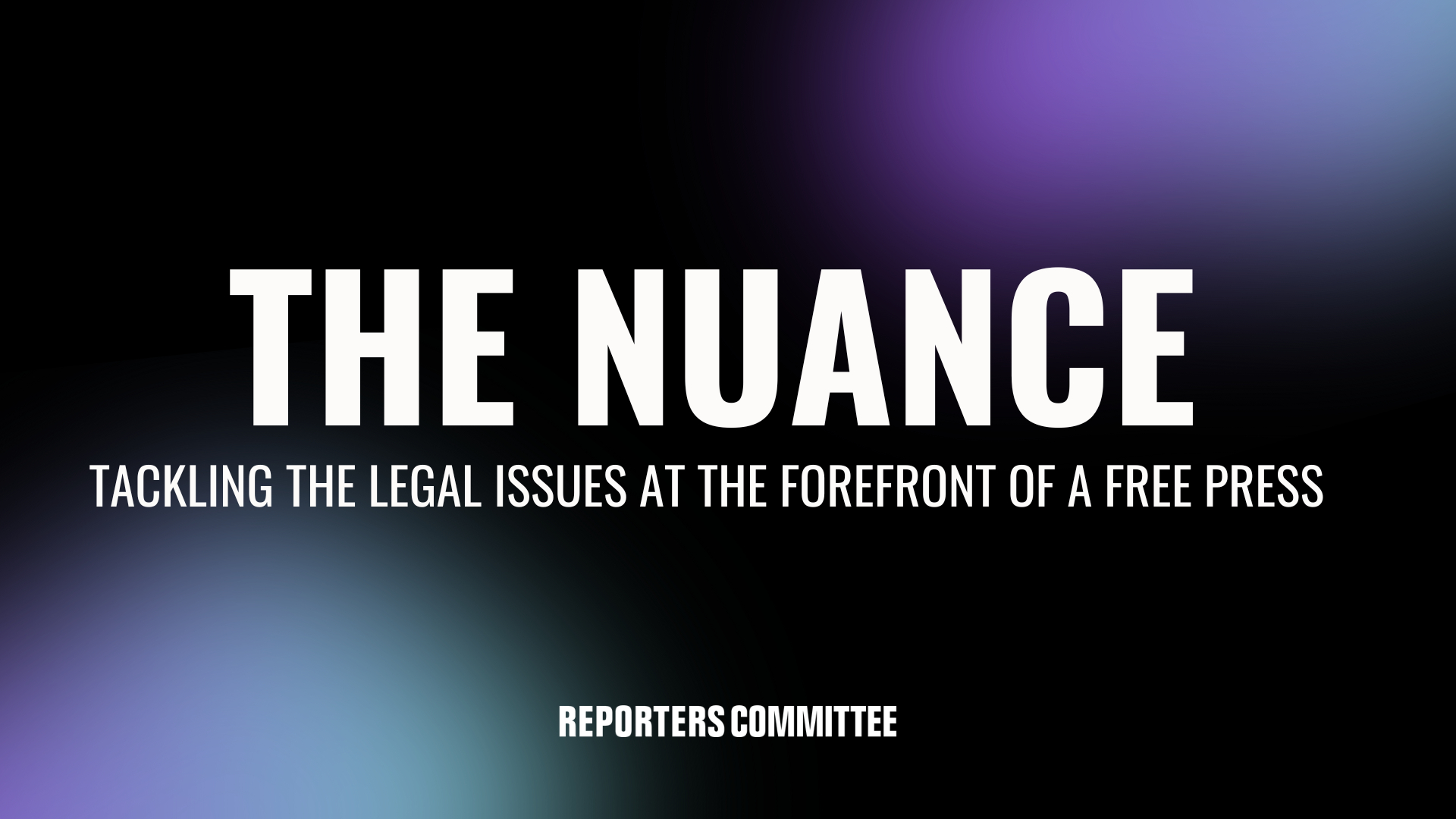A century of repression?

Editor’s note: In a follow-up newsletter, Technology and Press Freedom Project Director Gabe Rottman wrote a long-form clarification to this post, explaining that he meant to say that “a member of the news media has never been charged under the still existing provisions of the Espionage Act that criminalize national security leaks to the press.”
If you’re at all interested in the infinitely interesting world of national security press leaks, I recommend picking up “A Century of Repression,” Ralph Engelman and Carey Shenkman’s new and comprehensive study of the Espionage Act of 1917 and press freedom. It’s an impressive piece of both legal and journalistic history, charting the course of the Espionage Act from its origins in the super-patriotism and widespread dissent accompanying the United States’s entry into World War I to the law’s increased application against media leakers since 9/11.
In a review in Lawfare, Gabriel Schoenfeld — a scholar at the Niskanen Center and the author of the equally impressive “Necessary Secrets,” a measured defense of criminalizing truly harmful leaks — criticized the book as “unbalanced.” “One significant problem is encapsulated by the title,” Schoenfeld writes. “The idea that the Espionage Act ushered in a century of repression is preposterous and never even remotely demonstrated in the pages of their book.”
Schoenfeld’s basic point is that, even if the Espionage Act is a “loaded gun” pointed at the press, as scholars Benno Schmidt Jr. and Harold Edgar put it in the definitive legislative history of the law, it’s never been fired. That’s a fair observation. It is true that the law has only been deployed in earnest against journalistic sources in the last decade and a half. It is also true that a member of the news media has never been charged under the law, and the only instance of the government seeking to prosecute the “pure publication” of national defense secrets is in the Julian Assange case.
But I’d like to add one footnote. Engelman and Shenkman focus heavily on how the Espionage Act has been used in formal investigations and prosecutions involving journalists or their sources, but the concern about equating journalism with spying, as a legal matter, goes beyond just the strict use of that specific law either as the predicate for an investigation or the basis for a prosecution.
Indeed, many of the more egregious leak hunts before the 1970s were effectively extra-legal. That is, they took place before the Keith case, which held that domestic national security surveillance requires a warrant; before passage of the Foreign Intelligence Surveillance Act, which created a legal process for foreign intelligence surveillance on U.S. soil; and before Executive Order 12333, which vested the FBI with sole responsibility for building criminal counterintelligence cases in the U.S.
In other words, before the Morison case in the late-1980s, the first successful journalistic source prosecution under the Espionage Act (there were a few others, including the Ellsberg/Russo case, but they either fell apart or were resolved under a different law), the intelligence agencies could effectively take matters in their own hands.
So, you had “Project Mockingbird,” where, under pressure from Attorney General Robert Kennedy, the director of central intelligence authorized surveillance against two syndicated columnists who had alarmed Secretary of Defense Robert McNamara with accurate questions about Soviet aid to Cuba. You had more subtle pressure in the mid-1960s from the National Security Agency that led the publisher of what remains the popular bible on cryptography, “The Codebreakers,” to excise paragraphs about British signals intelligence. You had physical surveillance by the CIA in projects “Celotex I” and “Celotex II” against Washington Post national security reporter Michael Getler and columnist Jack Anderson.
And there’s more. “Project Butane” involved CIA physical surveillance against Victor Marchetti, the author of “The CIA and the Cult of Intelligence,” which, per a court order, was famously printed with agency-mandated redactions. The Espionage Act itself figured in a formal memorandum by Attorney General Edward Levi for the Ford White House, asserting that the Espionage Act could be used to prosecute Seymour Hersh and The New York Times for reporting that the “Operation Holystone” submarine surveillance program had penetrated Soviet waters (but recommending against it). In the 1980s, The Washington Post held for months a Bob Woodward story about a related program — “Operation Ivy Bells” — following legal threats from the CIA and NSA.
All of this is to say that the lack of courtroom action around the Espionage Act before the 1980s could be attributed, at least in part, to the nature of intelligence oversight and national security law before the reforms of the latter half of the 1970s. It’s worth bearing that in mind when gauging the “repressive” effect — or not — of the Espionage Act during much of its first century.
Like what you’ve read? Sign up to get The Nuance newsletter delivered straight to your inbox!
The Technology and Press Freedom Project at the Reporters Committee for Freedom of the Press uses integrated advocacy — combining the law, policy analysis, and public education — to defend and promote press rights on issues at the intersection of technology and press freedom, such as reporter-source confidentiality protections, electronic surveillance law and policy, and content regulation online and in other media. TPFP is directed by Reporters Committee attorney Gabe Rottman. He works with RCFP Staff Attorney Grayson Clary and Technology Press Freedom Project Fellow Emily Hockett.